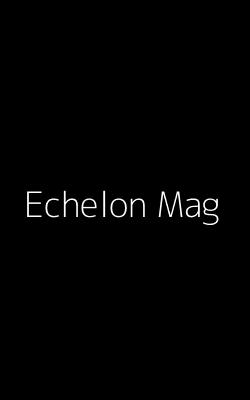By combining trust with innovation, HNB General Insurance seeks to modernise protection in Sri Lanka. Building on HNB’s long-standing reputation, the company is investing in smarter systems, parametric products, and data-driven services to stay ahead of changing risks and customer expectations. Its focus goes beyond policies, emphasising education, transparent claims, and digital engagement to build lasting trust. Determined to chart its course while respecting its heritage, HNB General Insurance aims to set a benchmark for modern insurance in Sri Lanka. Sithumina Jayasundara, Director/Chief Executive of HNB General Insurance, and Dilshan Perera, Chief Transformation Officer of HNB General Insurance, explain how the company is preparing for a more resilient, customer-centred future.
What capability shifts and technological investments have supported HNB General Insurance’s evolution to a more relationship-driven, customer-focused brand?
Sithumina: We’re active on social media, having real conversations with customers. Traditionally, insurers used fear-based messaging, but we focus on social responsibility and practical advice, like safe driving or handling floods, instead of pushing products. This has built trust and stronger bonds. We’ve invested in technology to support this shift, with a new core system for efficiency plus B2B and B2C platforms. We were also among the first in the insurance industry to appoint a Chief Transformation Officer. This mindset helps us stay ready for what comes next.
Dilshan: We build on HNB General Insurance’s promise of being a trusted partner, positioning ourselves as a guardian agent that customers know will guide and support them. Technology is key to that promise. It’s about continuously improving the organisation, challenging everything from platforms to processes. This supports customer satisfaction and safety, our top priorities. Our 2025 plan, “Crafting Customer Delight,” guides these initiatives. Together with our brand promise, technology has become central to meeting expectations and building deeper relationships.
How are rising climate risks, natural disasters, and evolving consumer expectations influencing product design and brand messaging?
Sithumina: If you look at global trends, climate-related risks are steadily rising. Due to global warming, Sri Lanka is seeing more floods, cyclones, and other disasters, which raises our risk profile. While conventional products still serve the market, they may not fully meet these changing needs. That’s why we’re exploring parametric insurance, better suited for emerging risks. We’ve introduced products for fishing and farming and are looking at other niche segments. Looking ahead, we’re gathering data and using advanced technologies to understand risks. By looking across the value chain and embracing digitalisation, we can identify gaps and build specialised solutions.
Dilshan: Simplification and digitalisation are key for us. Corporate customers usually understand their risks, but the wider public often doesn’t know they can get affordable disaster coverage. We’re working to simplify how customers buy these products and improve their experience through digital tools. Afterwards, we continue sharing educational messages so they know what protections are available and how to access them.
How does the company balance growth in segments like motor insurance, which are volume-driven, with the need to build brand credibility in more complex areas, such as health or property?
Sithumina: Over the past two years, we’ve focused strongly on the non-motor segment. Previously, the industry relied on motor insurance, but vehicle import restrictions made that harder. So we shifted to expand into different types of insurance, with a focus on niche areas. While we rank sixth overall, in some segments we are industry leaders. While the industry recorded modest single-digit growth in the first quarter, we achieved strong double-digit growth through our niche-focused strategy.
Dilshan: We’ve taken strategic initiatives to balance our portfolio with the brand promise. New products, services, and training have created momentum. In motor insurance, we’re tracking the rise of electric vehicles. On the non-motor side, which has more complexity, we’ve invested in domain knowledge and strengthened capabilities to enter new segments with reinsurance backing. Overall, we’re working together to move HNB General Insurance forward, supporting retail and corporate customers while collaborating with our partners to strengthen the brand.
How is HNB General Insurance managing reputational risks and positioning itself to stay relevant for the future?
Sithumina: The perception of insurance isn’t great, mostly because of poor communication and low public awareness. We are working to change that through welcome calls, staff training, and transparent claims. These efforts, grounded in education and openness, have helped us achieve high customer satisfaction and set a compliance benchmark. Our vision is to remain future-focused and lean, so that when people see our name, they view us as one of the most trusted and effective players in the market.
Dilshan: As an insurer, reputation often comes down to managing claims and expectations. Education is key, like reminding customers to update the insured values of their vehicles to avoid surprises. We support this through calls, WhatsApp, and social media. Internally, our strong focus on compliance and regulations has made us a trusted industry benchmark. Going forward, our focus is to build on this foundation and set standards for how insurance should work. We want to be the reference point for the industry, working with stakeholders to achieve that vision.
Further information about the 100 Most Valuable Brands in Sri Lanka:
Sri Lanka’s Top 100 Most Valuable Brands
Introducing Brand Finance and Sri Lanka’s Most Valuable Brands
Brand Valuation Methodology: Identifying Sri Lanka’s Top 100 Brands


